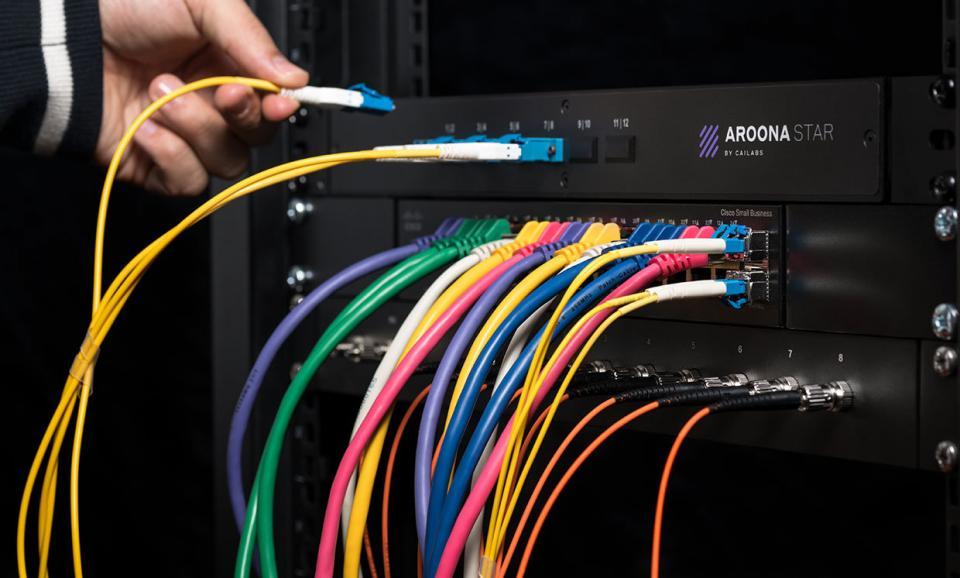Why picking the right internet connection is important

With modern day businesses depending on Cloud file services such as Dropbox, Google Drive and OneDrive, it is becoming increasingly important to have the bandwidth available to upload and download documents & data.
Think of bandwidth like two water pipes. One brings water into the house, one takes water away. The internet works in the same way: you have upload and download.
Bandwidth describes the size of each pipe, which in turn tells us how quickly we can transfer data – the bigger the pipe, the more data can flow. Cloud file services use both pipes – every time you create a document, that document is sent up to the Cloud (using upload bandwidth), every time you access a document, it is downloaded (using download bandwidth).
On top of that, many services such as video conferencing (Skype, Hangouts, Zoom) and office phone systems also use upload and download bandwidth, not to mention employees using services such as Spotify, YouTube and other services, which are heavier on the download pipe.
So then comes the question we hear a lot – “Well what type, and what speed internet connection do I need?”
There are many different types of internet connections, ADSL, FTTC, FTTP, Ethernet first mile, fibre leased lines, etc.
We are going to look at the two most common connections. FTTC (also known as VDSL, or Fibre To The Cabinet) and fibre leased lines.
Fibre To The Cabinet lines are what is delivered to most households in the UK. A fibre optic cable is run to the cabinet at the end of the street, the connection is then delivered over the existing copper telephone wire coming into the premises.
The connections are contended, meaning the fibre line is shared with everybody else in the area, meaning you are never guaranteed bandwidth. As they use the copper cable, they are also more affected by interference and aging copper, meaning they don’t provide as stable of a connection.
These connections are always unsymmetrical, meaning download speeds can be anywhere from 10Mbps to 100Mbps, whilst upload speeds are often in the range of 5Mbps to 35Mbps.
These connections are cheap, have fast turnaround times, and are suitable for small offices 1-5 users, or as backup lines, in the case the main internet connection for the office does go down.
The second type of internet connection, known as fibre leased lines, are fibre optic cables brought right into your office space – avoiding the use of old copper wires.
These connections are uncontended, meaning whatever bandwidth you pay for on this line, is all yours, you do not share this line with anybody else. Pay for 100Mbps upload and 100Mbps download, and you get all of that.
As an added benefit, most leased lines are guaranteed to be connected 99.9% of the time, with many companies offering compensation in terms of refund/discount in the event there is an outage.
These lines are also often symmetrical, meaning if you choose to go for 100Mbps download, you get 100Mbps upload as well.
Leased lines are often much more flexible, by offering speeds capable of 1Gbps (1000Mbps) upload and download, in some cases 10Gbps.
For some companies, the flexibility there is important. Lets say a film production company of 15 employees has a fibre leased line.
For most of the year, employees only need normal internet access, i.e. phones, video conferencing and small file sharing (such as PPTs, Word documents) For this we might recommend a 100Mbps line.
However every time a film is finished, the company has to transfer 250GB of data to a cloud storage service. In this case, the company may choose to upgrade the internet connection to the full 1Gbps for 1 day. Once upload is finished, the internet connection goes back to their normal 100Mbps line, saving a huge amount of time, and money.
Leased lines often have an install charge (unless a fibre cable is already in the office), and have higher monthly fees.
So now you know both the 2 main types of connections, which one do you pick?
As a rough guide, use the table below, however we would always recommend speaking to one of our specialists, to discuss your exact needs, as this table does not take into account specifics for your companies requirements.
Office use: Video Conferencing, VoIP Telephone system, File Sharing and General Access.
| Number Of Employees | FTTC (VDSL) | Fibre Leased Line |
| 1-5 | Yes | Yes (25Mbps) |
| 6-10 | Maybe | Yes (50Mbps) |
| 11-20 | Use only for backup line | Yes (100Mbps) |
| 21-50 | Use only for backup line | Yes (150Mbps) |
| 51-100 | Not suitable | Yes (250Mbps) |
| 101 + | Yes (500Mbps) |
Are you in the process of planning an office move? Or maybe your company is growing and require faster internet speeds.
Why not give us a call to discuss your requirements? Office 21 works with many different internet providers, and can offer discounts when combining IT Support with other services we offer. Schedule an appointment with a specialist today!

